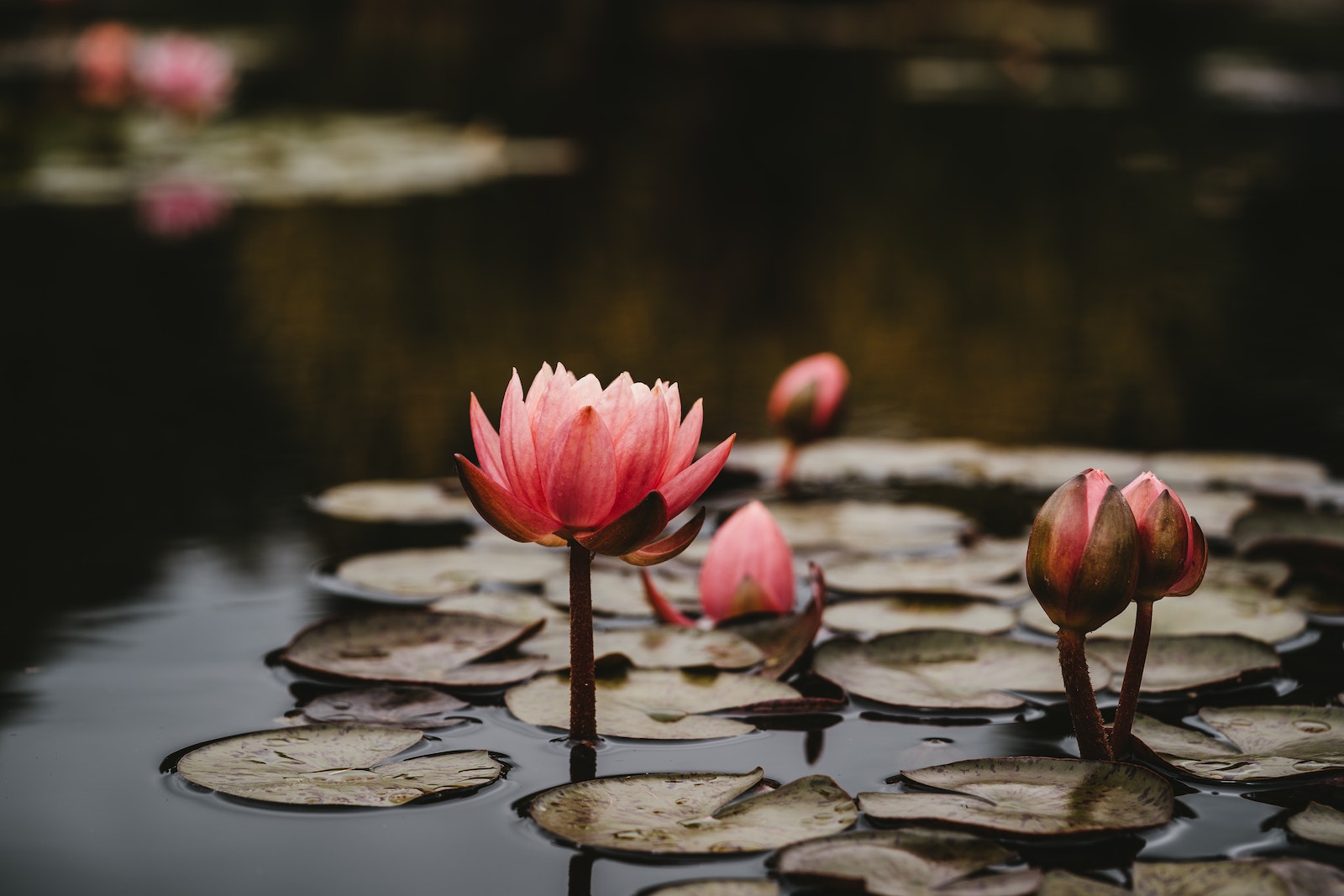Buddhadharma Book Briefs for Spring 2022
Joie Szu-Chiao Chen reviews Seeing with the Eye of Dhamma by Buddhadasa Bhikkhu, Roaming Free Like a Deer: Buddhism and the Natural World by Daniel Capper, Rethinking 'Classical Yoga' and Buddhism by Karen O'Brien-Kop, and more. The post Buddhadharma Book Briefs for Spring...

Joie Szu-Chiao Chen reviews Seeing with the Eye of Dhamma by Buddhadasa Bhikkhu, Roaming Free Like a Deer: Buddhism and the Natural World by Daniel Capper, Rethinking ‘Classical Yoga’ and Buddhism by Karen O’Brien-Kop, and more.

First published in 2001 when the author was seventy-eight, Setouchi Jakucho’s memoir Places (Hawai’i) has finally been translated into English, by Liza Dalby. Setouchi, now ninety-nine, is perhaps Japan’s most famous Buddhist nun; before she was ordained at the age of fifty-one, however, she was a novelist, controversial for her candid portrayals of female sexuality and notorious for her extramarital love affairs. In this autobiographical work, Setouchi journeys through the most formative places of her life with a frank realism that only occasionally gives way to nostalgia.
From the mountains of her childhood to her last Tokyo apartment before taking tonsure, Setouchi anchors the meandering memories of her messy entanglements with love, bouts of depression, and the nascence of a “temptation to wander, to shed this worldly life” in the various places where she once lived and loved. “Everyone eventually passes away; time passes as well,” she writes. “But it seems to me that the place where you set your foot, the memory held by a physical piece of land, is what endures.”
While Setouchi finds liberation in the disengagement from her physical body—for her, the site of so many bonds of craving—Willa Blythe Baker points to another path in The Wakeful Body: Somatic Mindfulness as a Path to Freedom (Shambhala). Decades of meditation practice informed by Buddhist yoga have led Baker to the conclusion that experiencing the body in all its aliveness is vital to the path of spiritual pursuit. She defines somatic mindfulness as “a relaxed, loving attention spontaneously experiencing the present moment through the entire bodymind” and offers meditation exercises throughout to facilitate its cultivation. Rather than let the body’s native “landscape of feeling” recede into the background, Baker makes a case for utilizing the body to develop mental attention and physical presence. Offering personal anecdotes and unpretentious advice, Baker observes that embodied ease is powerful to behold: “A body that radiates kindness can teach you more about the integration of head and heart than any scripture.”
Few questions have vexed philosophers as much as the seemingly intractable issue of the body’s relationship to the mind, and there are few disciplines for which understanding this interrelation is more important than the field of medicine. At a time when mindfulness meditation is being touted for its therapeutic benefits as if it were a recent medical discovery, C. Pierce Salguero reminds us in A Global History of Buddhism and Medicine (Columbia) that addressing physical and mental illness has always been a foundational aspect of Buddhist philosophy and practice. In this comprehensive volume, Salguero demonstrates that in spite of the diverse perspectives on the topic, “learning to use the interrelationships between body and mind has been one of the most prominent features of Buddhist medicine in all times and spaces.” He also deftly points out that the Buddhist view on the nature of illness and healing is eminently relevant to the issues of today, exposing “how our health is interdependent with how we treat non-human beings and the natural environment and how our destruction of the planet is at once a moral and medical catastrophe.”
Kaira Jewel Lingo understands that the world with its literal and metaphorical calamities has a way of making us distrust our ability to cope with challenges. So it is with gentle encouragement that she offers reflections on why We Were Made for These Times: Ten Lessons on Moving through Change, Loss, and Disruption (Parallax). Through personal stories, guided meditations, and journaling prompts, Lingo ushers us back to a place of faith in our inherent strength. In one particularly affecting chapter, sure to resonate with anyone who knows the deeply unsettling feeling of self-doubt in the face of a momentous decision, she suggests a profoundly simple approach inspired by the Buddhist concept of “store consciousness.” Instead of demanding the answer to a predicament to arise instantaneously and becoming anxious when it does not, we might do better to ruminate upon it only up to a certain point, then letting it go and relaxing into the trust that the answer will ripen in its own time. By planting the seed of the question in our consciousness and allowing it space and time to grow, clarity and wisdom arises unexpectedly and naturally. This is a book for anyone in need of extra support in times of transition, especially in the face of destabilizing forces such as fear and uncertainty.
Xuanzang (600–662 CE), the most celebrated Chinese monk of all time, is often looked to as a model of resilience for having weathered a sixteen-year journey on foot from China to India in search of scriptures. In Xuanzang: China’s Legendary Pilgrim and Translator (Shambhala), Benjamin Brose paints a vivid portrait of Xuanzang, noting rightly that the image of “the urbane, learned scholar–monk plunging headlong into the unknown, abandoning comfort and risking death in his single-minded pursuit of the Dharma” evokes the archetypal story of the Buddha himself. As a result, Xuanzang has become a figure malleable to the imaginations of sundry peoples: some view him as a cultural hero or a skilled diplomat, some as a literary reformist or simply as an intrepid traveler. Keenly aware that the significance of Xuanzang goes beyond the facts of his life, Brose rounds out this authoritative biography by including two other facets to Xuanzang: excerpts from his notable translations and an analysis of his enduring legacy in the Buddhist world, where his figurative and corporeal relics continue to be disputed over, venerated, and mythologized.
If the remains of Xuanzang have generated fervor, how much more so for the relics of the Buddha. The Buddha’s Tooth: Western Tales of a Sri Lankan Relic (Chicago) by John S. Strong studies the convoluted stories resulting from the European encounter with two Sri Lankan tooth objects associated with the Buddha. One is Sri Lanka’s most revered Buddha tooth relic, enshrined today in Kandy, and the other is a less famous tooth of dubious origins that was taken by the Portuguese in the sixteenth century and destroyed in a public show of Christian imperialist violence. Strong is most interested in what the stories surrounding these two objects—their “storical evolution,” as it were—tell us about the West’s evolving concept of Buddhism after its initial colonial encounter and the way objects are infused with meaning, potency, and cultural import through centuries of narrative layering.
It is commonly supposed that Buddhist monastics are renunciants who live entirely divorced from monetary matters. In reality, all Buddhists, like all human beings, have quotidian concerns that require the exchange of currency for goods or services. Monks, Money, and Morality: The Balancing Act of Contemporary Buddhism (Bloomsbury), edited by Christoph Brumann, Saskia Abrahms-Kavunenko, and Beata Switek, features finely observed ethnographies from a range of Buddhist societies in which scholars examine the fraught relationship between money and morality in the sangha. From Japan to Thailand, Tibet to Mongolia, the lived reality of Buddhists in a commercialized world can be filled with contradictions: mendicant monks can be materially wealthy, monastics can be entrepreneurial, and donations can flow from temples to the laity, not necessarily the other way around. The essays make clear that in every Buddhist monastic community, money matters and corruption happens; monastics and ritual specialists worry about obtaining money, just as they worry about mishandling it.
Buddhadasa Bhikkhu (1906–1993), one of Thailand’s most revered monks of the twentieth century, wants us all to be problem solvers. In an edited series of his lectures recently published as Seeing with the Eye of Dhamma: The Comprehensive Teaching of Buddhadasa Bhikkhu (Shambhala), translated by Dhammavidu Bhikkhu and Santikaro Upasaka, he exposes the absurdity of thinking the solutions to suffering offered by the Buddha are “too goody-good,” too beyond our reach. Teaching that a life of mental cultivation is in fact for everyone, he delves into the training of the senses, treating them as the building blocks of the path that leads to ultimate “coolness,” or nibbana. “Life isn’t hot and anxious when we live rightly,” he says. And how do we know if we are living correctly? “Any approach that restrains, clears, or stills today’s mind so that it can solve problems better than yesterday’s mind” is the proper path forward.
Buddhist Ethics: A Philosophical Exploration (Oxford) by Jay L. Garfield similarly casts Buddhism as a problem-solving enterprise. With characteristic clarity and insight, Garfield points out that Buddhism’s entire approach to ethics is an attempt to resolve the existential conundrum of suffering, not an exercise in abstract metaphysics. This orientation, buttressed by ideas such as dependent origination and no-self, means that unlike its European counterparts, Buddhist ethics does not dwell on the question of “Why be good at all?” but instead asks, “How do we cultivate the path(s) that lead to the experience of good for all?” In this major contribution to the study of philosophy, Garfield outlines fundamental Buddhist concepts as they pertain to ethical thinking and elucidates where Buddhist ethical theory converges with, and diverges from, other modes of ethics—how it is “a way of asking different ethical questions…and of providing a richer understanding of the good life than we could have were we not to ask those questions.”
Any discussion of ethical living today must account for our interactions with the natural environment. Although Buddhist concepts have long been touted by environmentalists as a source of inspiration, Daniel Capper assesses Buddhism more critically in Roaming Free Like a Deer: Buddhism and the Natural World (Cornell) and with a different agenda in mind. His concern is understanding how Buddhism might help or hinder us on our quest to achieving a “sustainable biosphere,” wherein we are able to see each and every constituent of the natural world, whether organic or inorganic, as indispensable for a fully functioning Earth. Following in the footsteps of a subset of ecologists, Capper believes that the perception of all environmental entities, animate or otherwise, as having “personhood” qualities—that is, worthy of being treated as subjects and not merely objects—positively impacts the way we practice environmentalism. In this thought-provoking work, he mines Buddhist stories that involve nonhumans to explore how “personhood relationships” (or the lack thereof) unmask Buddhism’s strengths and weaknesses vis-à-vis the environmental cause.
Over millennia and across wildly varied environs, Buddhism has proven to be an adaptable religion; it is certainly a well-travelled one. Today it might be taken for granted that Buddhism exists in the western hemisphere, yet this too has an epic and winding history, as suited to the classroom as it is around a fireplace. This is the story that Rick Fields (1942–1999) tells in How the Swans Came to the Lake: A Narrative History of Buddhism in America (Shambhala), a book that forty years after its initial publication still retains an impressiveness of scope and ambition. Inspired by traditional Buddhist historiographies, Fields begins the history of American Buddhism in India with the life story of the historical Buddha, then meticulously works his way through the West’s earliest physical, intellectual, and linguistic encounters with Buddhism. The narrative is at its most captivating when we enter the twentieth century; Fields’ personal familiarity with the major Buddhist teachers and students of the day lends the writing a luster of intimacy, a sheen of true history-in-the-making. His concluding words still ring with moving optimism: “North American Buddhism will continue to be a pluralistic Buddhism, a Buddhism in which there is much dialogue and exchange, but also a great diversity and plurality of skillful means.” Fields saw America, with its “multicultural, diverse, dynamic landscape,” as “the perfect environment for awakening in the twentieth century.” Perhaps we would all do well to see the same in this century, too.
Ideas and beliefs do not evolve in vacuums, but rather through dialogue, via disagreements, and in debates. Rethinking ‘Classical Yoga’ and Buddhism: Meditation, Metaphors and Materiality (Bloomsbury) by Karen O’Brien-Kop is an attempt to rehabilitate Buddhism to the development of yoga in the early centuries of the Common Era. By demonstrating that Patanjali’s Yoga Sutra shares metaphors with Buddhist texts from around the same period, O’Brien-Kop argues that classical yoga theory should not be thought of as belonging to any one school of thought, and certainly not as delineated across Brahmanic versus Buddhist lines. This work of close textual scholarship is undoubtedly intended for a specialized academic readership, but O’Brien-Kop’s extensive analysis of metaphor theory may be of broad interest. She explains how metaphors serve as the connective tissue between an abstract concept such as liberation and the concrete practices that yoga entails, thereby generating deep layers of meaning. “Metaphor in soteriology is not optional or ornamental,” she writes, but is the very thing that sustains a “complex conceptual system” such as yogic practice.
Difficult as it is to fully understand anything, is there any concept that is harder to wrap our heads around than no-thing, that which does not exist? Perhaps this is why Nothing: A Philosophical History (Oxford) by Roy Sorensen confounds as much as it educates. The book defies categorization, for it is not exactly written for the philosopher, though it does contain jargon; the chapters follow a rough chronology, but the content is not strictly historical; and Sorensen, while appearing to poke fun at everyone, is also self-deprecating. In place of a unifying narrative, we are given a jaunty rumination on the different ways important thinkers across time have conceptualized absence, what is not. It should come as no surprise that the Buddha and Nagarjuna are included in Sorensen’s list of “nothing” philosophers, and he has interesting perspectives on their views—even if he does sometimes slip into broad and even mordacious generalizations. This is an erratic but lively tour through the minds of those who dared to think about the shadows in addition to the light.
By Matthew W. King’s own admission, In the Forest of the Blind: The Eurasian Journey of Faxian’s Record of the Buddhist Kingdoms (Columbia) is a “strange book.” In a way, the crux of King’s argument does not even much concern the titular Chinese pilgrim–monk Faxian (337–422), even though the book contains a translation of the Tibetan version of his famous Record of Buddhist Kingdoms. The book is not so much about Faxian and his journey as it is about the journey of his written legacy many centuries later. By tracing how a French translation of Faxian’s travel record eventually peregrinated its way back to Asia and served as the basis for translation into Mongolian and Tibetan, King weaves a metanarrative about the complexity of textual circulation and cultural exchange. The author, intent on showing that history is more interesting when we forego linearity and surrender to circularity, offers students of Buddhism and history a fresh lens through which to conceptualize Asia anew, one that may pave the way for a less Orientalist future.

 JaneWalter
JaneWalter 
































